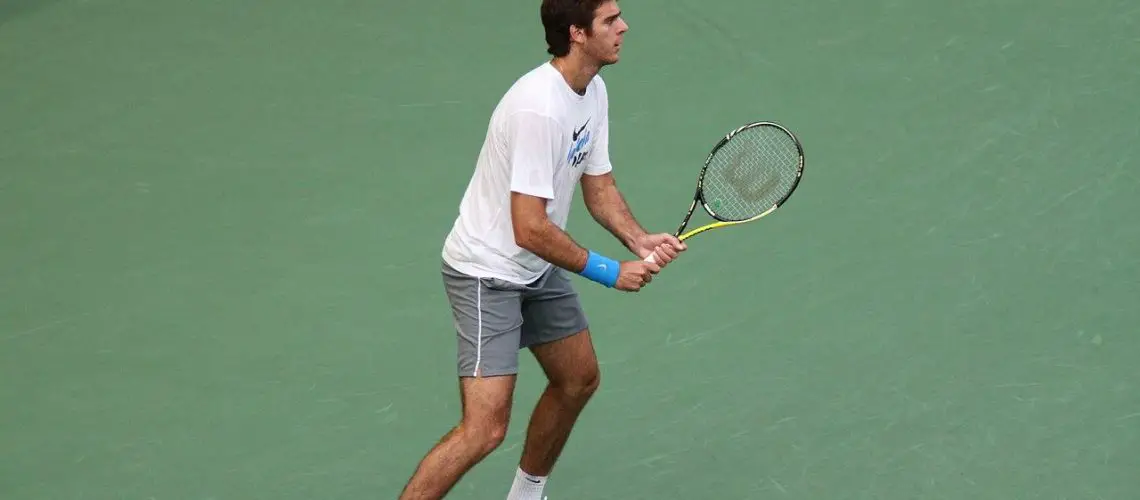We may earn money or products from the companies mentioned in this post.
Purpose of putting tennis balls in the dryer

Have you ever wondered why some people put tennis balls in their dryer? It may seem like an odd practice, but there are actually several reasons behind it Let’s explore these reasons and discover how tennis balls can be a helpful tool in your laundry routine
1 Speeding up drying time
We all know that waiting for laundry to dry can be a tedious process However, by adding a few tennis balls into your dryer, you can actually speed up this process How does it work? Well, when the balls tumble around with your clothes, they create extra agitation This movement helps to separate the fabric fibers and allows more hot air to circulate, resulting in faster drying times
2 Reducing wrinkles
Tennis balls aren’t just useful for drying; they can also help reduce wrinkles in your clothes As the balls bounce around, they gently massage the fabric, preventing it from clumping together and forming stubborn creases So not only will your clothes dry faster, but they’ll also come out of the dryer looking smoother and less wrinkled
3 Fluffing items such as down-filled garments and bedding
If you have down-filled garments or bedding items like comforters or pillows, using tennis balls in the dryer is especially beneficial These items tend to lose their fluffiness over time due to compression during washing and drying cycles By adding a few tennis balls into the dryer with these items, you can restore their loftiness The constant bouncing of the balls helps to break up any clumps and redistribute the filling evenly throughout
Common concerns about using tennis balls in the dryer

While using tennis balls in the dryer offers several benefits, it’s natural to have some concerns Let’s address a few common worries and put your mind at ease
1 Noise and damage
You might be worried about the noise tennis balls can create in the dryer or if they can cause any damage Rest assured, the noise is usually minimal and should not be a cause for concern As for damage, tennis balls are designed to withstand vigorous use on the court, so they are unlikely to cause any harm to your dryer or clothes
2 Allergies and sensitivities
If you or someone in your household has allergies or sensitivities, you might wonder if using tennis balls could trigger any reactions While rare, some individuals may have latex allergies since tennis balls are often made from this material In such cases, it’s best to opt for latex-free alternatives like wool dryer balls
3 Tennis ball scent transfer
Tennis balls may have a distinct scent due to their materials and manufacturing processes However, most manufacturers now produce unscented options specifically for laundry purposes If you’re concerned about scent transfer, look for these unscented varieties or give them a wash before using them in the dryer
In conclusion,
Factors to Consider When Using Tennis Balls in the Dryer

Using tennis balls in the dryer can be a game-changer when it comes to achieving fluffy and well-dried laundry However, there are a few factors you should consider before tossing those tennis balls into your machine Let’s explore these factors and make sure you get the most out of this simple yet effective laundry hack
Size and Capacity of Your Dryer
The size and capacity of your dryer play a crucial role in determining how many tennis balls you should use Standard dryers usually have a smaller drum capacity compared to large-capacity models If you have a standard-sized dryer, you might want to adjust the number of tennis balls accordingly to avoid overcrowding the drum
Type of Laundry Being Dried
Consider the type of laundry you’re drying when deciding on using tennis balls Delicate fabrics like silk or lace require special care as they can easily get damaged or tangled In such cases, using fewer tennis balls or opting for alternative methods may be more suitable to protect your delicate garments
On the other hand, if you’re drying heavy fabrics like jeans or bedding items such as comforters and duvets, tennis balls can help distribute heat and fluff up these bulky items more efficiently
Number of Tennis Balls Recommended for Different Loads and Materials
To achieve optimal results, it’s essential to follow guidelines on how many tennis balls to use based on different loads and materials
A general rule of thumb is to use two or three tennis balls per load for small to medium-sized loads with regular fabrics This helps prevent clothes from clumping together and allows air circulation for faster drying
If you’re dealing with larger loads or heavy fabrics, you may want to increase the number of tennis balls to four or more This ensures better agitation and helps fluff up your laundry effectively
Remember, these guidelines are not set in stone, but they can serve as a starting point for achieving desired results with tennis balls in the dryer
Alternative Options for Tennis Balls in the Dryer

When it comes to drying your clothes, tennis balls have long been a popular choice They help fluff up your laundry, prevent clumping, and reduce drying time But what if you don’t have any tennis balls on hand? Don’t worry, there are alternative options available that can yield similar results In this article, we will explore two alternatives: commercially available dryer balls and DIY options
Commercially Available Dryer Balls
If you prefer a ready-made solution, commercially available dryer balls are a fantastic option These handy little helpers come in various materials such as wool, rubber, and silicone
-
Wool Dryer Balls:
Made from natural fibers like sheep’s wool, these balls work by absorbing moisture and aerating your laundry as it tumbles in the dryer They can help reduce static cling and wrinkles while softening fabrics -
Rubber Dryer Balls:
These bouncy spheres are often made from non-toxic materials like PVC or BPA-free plastic Rubber dryer balls create space between your clothes as they bounce around during the drying process, promoting better airflow and faster drying times -
Silicone Dryer Balls:
These innovative dryer balls are gaining popularity due to their durability and ability to withstand high temperatures They work similarly to wool or rubber balls by agitating the fabric during drying cycles
Each type of commercially available dryer ball has its own benefits and drawbacks Wool dryer balls are eco-friendly but may produce more lint than other options Rubber dryer balls can be noisy but provide excellent fabric softening capabilities Silicone dryer balls offer longevity but might not be as effective at reducing static cling Consider your preferences and needs when deciding which type to choose
DIY Alternatives to Tennis Balls
If you prefer a more hands-on approach, there are simple DIY alternatives that can serve as substitutes for tennis balls in the dryer
-
Crumpled Aluminum Foil:
Take a sheet of aluminum foil and crumple it into a ball-like shape Aluminum foil can help fluff up your laundry while preventing static cling Plus, it’s readily available in most households -
Socks Filled with Rice:
Grab an old sock and fill it with uncooked rice, tying off the end securely As the sock moves around in the dryer, the rice inside acts as a natural agitator, separating your clothes and promoting faster drying times
Both these DIY alternatives are cost-effective and easy to find around the house They may not have all the benefits of commercially available dryer balls, but they can still help achieve similar results when tennis balls aren’t an option
In conclusion, if you don’t have tennis balls on hand or prefer alternative options for drying your clothes, commercially available dryer balls or simple DIY substitutes like crumpled aluminum foil or socks filled with rice can effectively fluff up your laundry while reducing drying time Choose what works best for you based on material preferences, desired outcomes, and availability
Conclusion: Balancing Efficiency, Safety, and Fabric Care with Tennis Balls in the Dryer

In conclusion, utilizing tennis balls in the dryer can be a game-changer when it comes to achieving efficient drying, ensuring safety, and caring for your fabrics By harnessing the power of these small but mighty sports accessories, you can optimize your laundry routine while prolonging the lifespan of your clothes
Efficiency at its Finest
Tennis balls act as natural fabric softeners and help to reduce drying time by improving airflow within the dryer As they bounce around during the drying cycle, they create separation between garments, preventing them from clumping together This allows hot air to circulate more freely and evenly throughout the load, resulting in faster and more efficient drying
Furthermore, tennis balls are an economical alternative to commercial dryer sheets or fabric softeners that often contain harmful chemicals By using tennis balls instead, you not only save money but also reduce your environmental impact
Safety First
When it comes to safety in the laundry room, tennis balls play a crucial role Their presence helps to prevent items like bedding or large towels from tangling up with smaller garments or becoming entangled with the dryer’s heating element This reduces the risk of overheating and potential fire hazards caused by excessive heat build-up or restricted airflow
Additionally, using tennis balls can minimize static electricity buildup during drying This is particularly beneficial for synthetic fabrics that tend to generate static cling The gentle friction created by bouncing tennis balls helps neutralize static charges, leaving your clothes free from annoying clinginess
Gentle Care for Your Fabrics
Tennis balls offer a unique advantage when it comes to fabric care They work wonders in restoring fluffiness to pillows, comforters, and stuffed toys by fluffing and separating the filling during drying This helps maintain their shape and ensures that they come out of the dryer looking as good as new
Moreover, tennis balls can be a useful tool for softening stiff or scratchy items like towels or denim jeans As they tumble around in the dryer, they gently massage the fibers, loosening them up and making them feel softer against your skin
It is important to note that while tennis balls are generally safe to use in dryers, it is advisable to check manufacturer guidelines for specific recommendations regarding your appliance Always ensure that the tennis balls are clean and free from any harsh chemicals or objects that could potentially damage your fabrics
In summary, incorporating tennis balls into your laundry routine brings a multitude of benefits From improved efficiency and safety to enhanced fabric care, these humble sports accessories prove their worth time and time again So why not give them a try? Your clothes will thank you!
Useful Links

THEREFORE you should add a Tennis Ball to your laundry …
Why You Should Put Tennis Balls in Your Dryer – YouTube
Is it safe to put tennis balls in the washing machine?
Things To Use Instead Of Tennis Balls In The Dryer
Tennis balls in the dryer, what’s the catch? : r/laundry
What Can You Substitute For Tennis Balls In The Dryer?
Can you really use tennis balls in the dryer to soften clothes?
Speed Up Laundry with Tennis Balls
Using Tennis Balls in the Dryer
Why You Should Put Tennis Balls in Your Dryer
11 Smart Uses for Old Tennis Balls | HowStuffWorks
The Best Dryer Balls of 2023 – Reviewed – USA Today
Do You Have to Dry Pillows with Tennis Balls?
How to Clean Tennis Balls – Step by Step
Can I put tennis balls in dryer? – Remodel or Move
What Do Dryer Balls Do?
The trick of using 2 tennis balls on the washing machine






